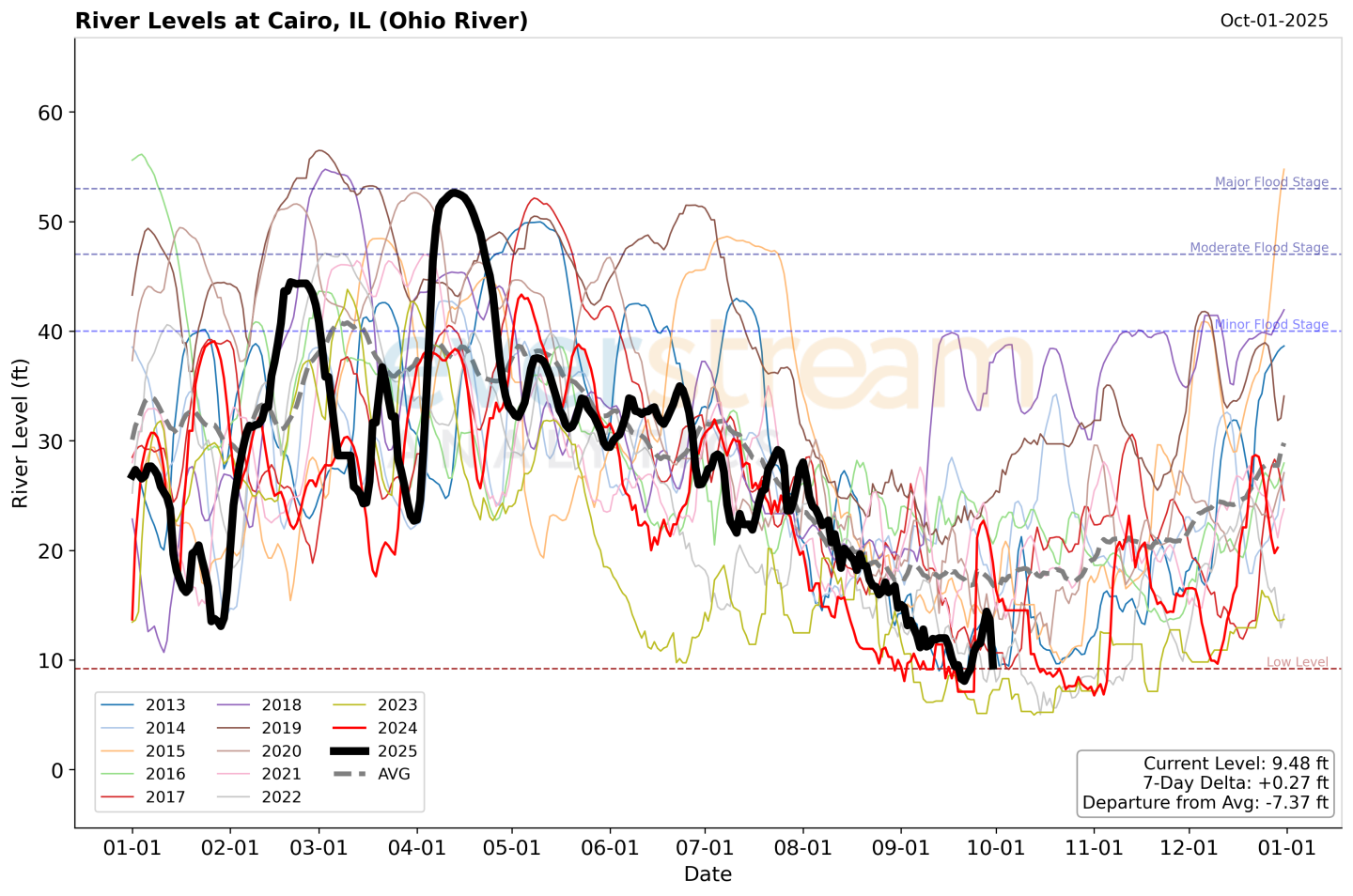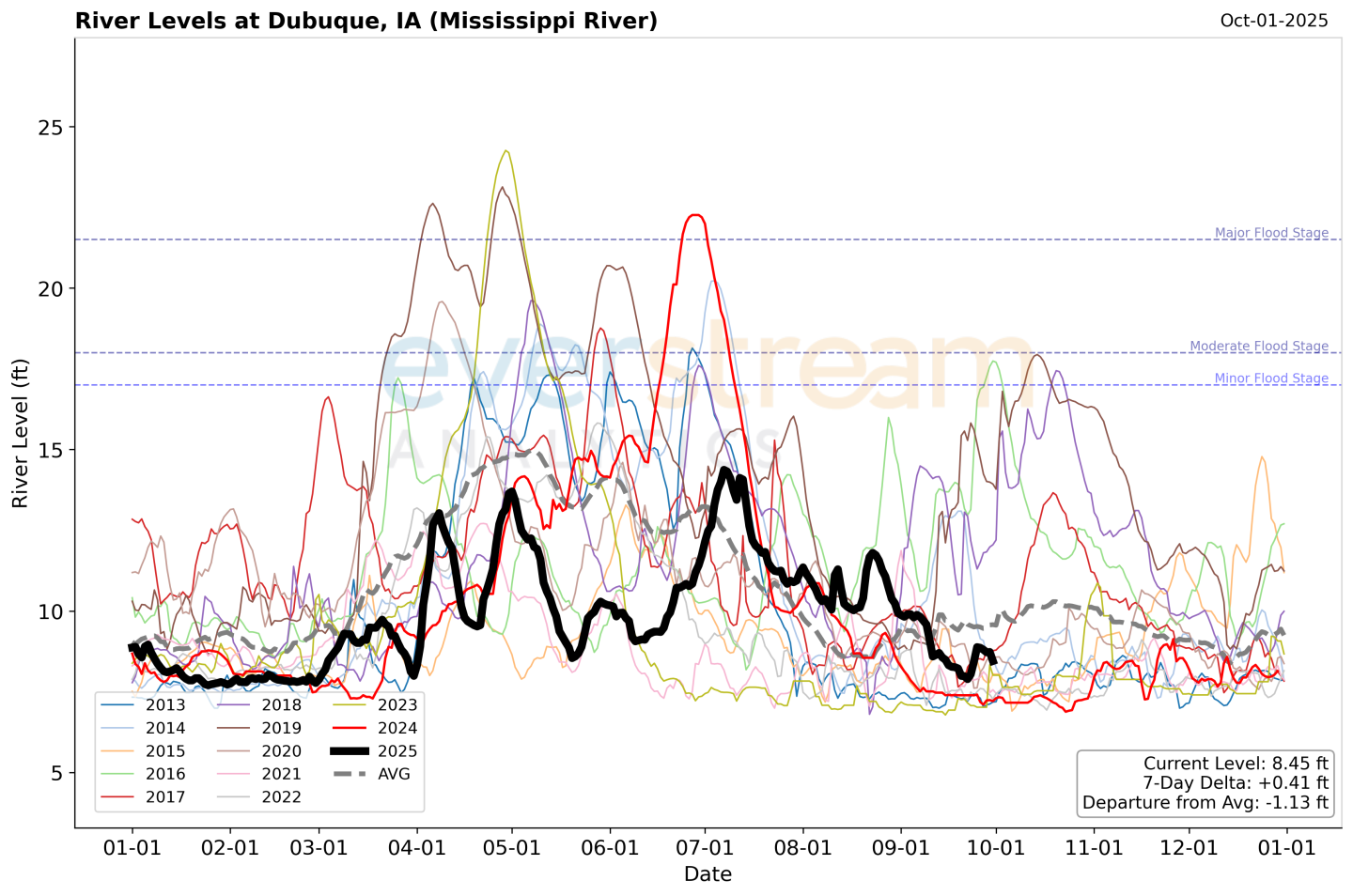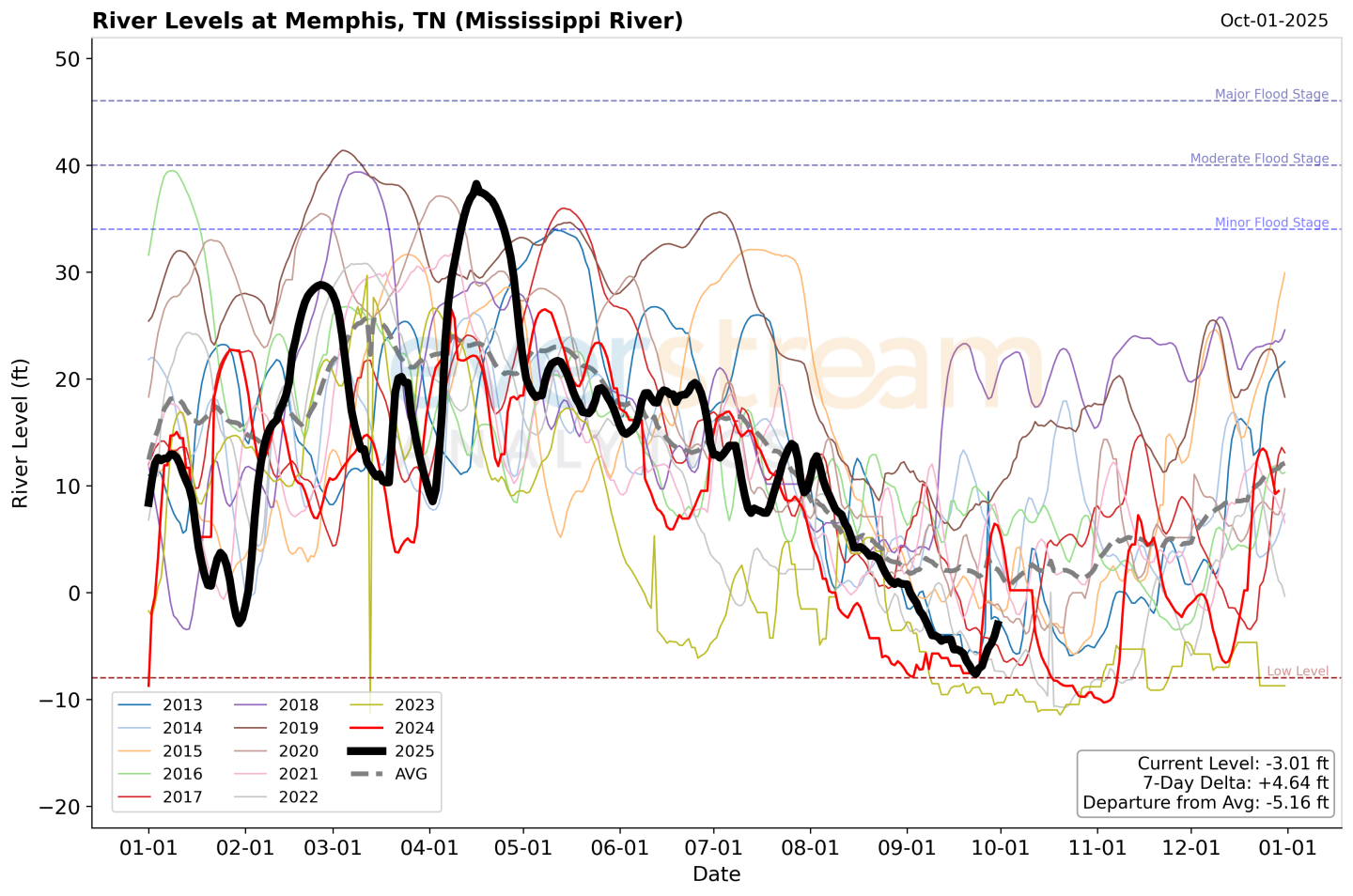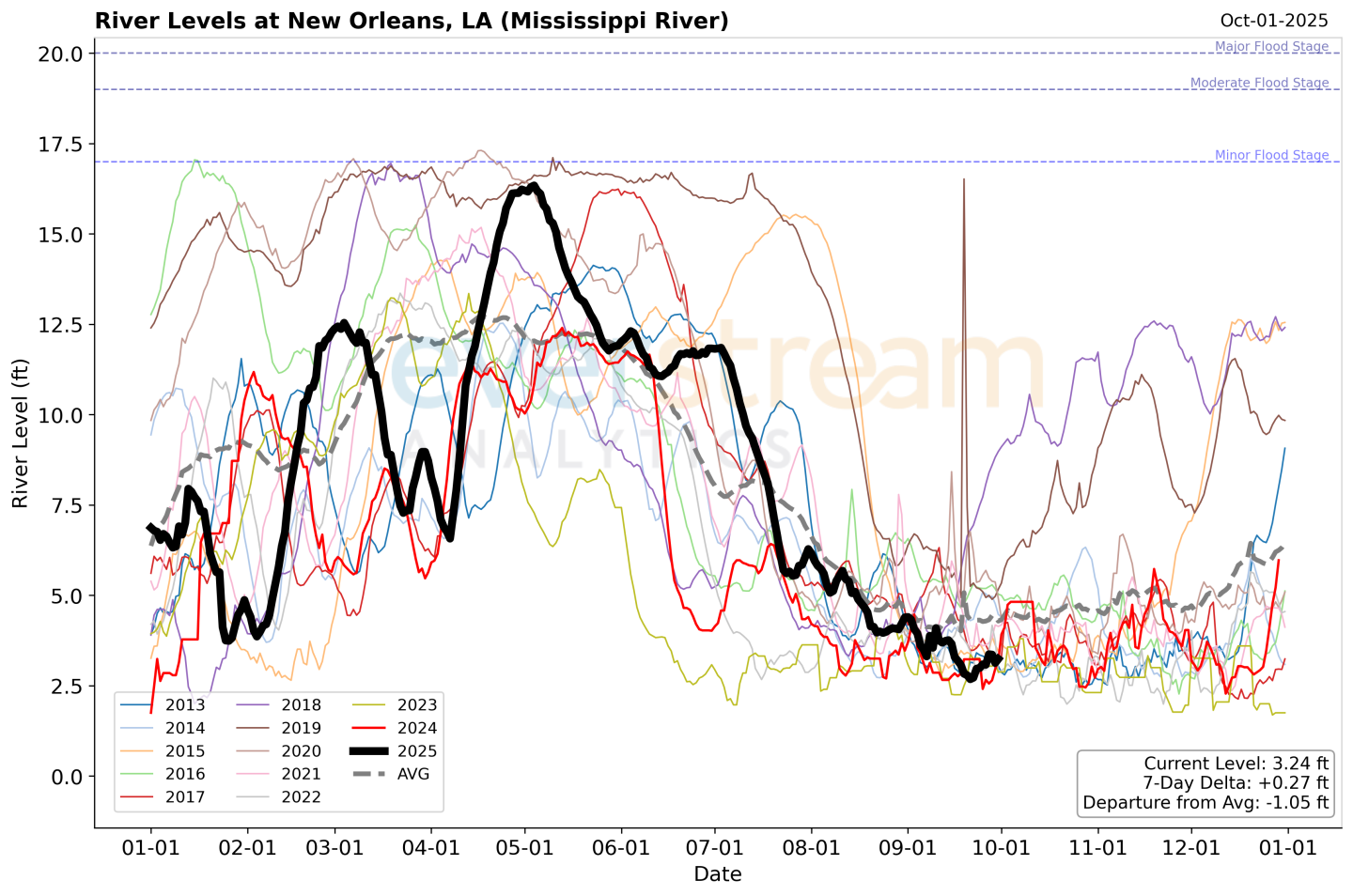Mississippi River levels are low this fall season—for the third year in a row.
“The timing couldn’t be worse,” says Jon Davis, chief meteorologist at Everstream Analytics. “October is a critical month for barge transportation in the Mississippi River Basin. This is especially the case in the agricultural sector as crops are harvested in the Midwest and transported mainly by barge to New Orleans.”
He says this year’s river levels mimic 2024 conditions. Barge restrictions were put in place in September, and currently, the low-water restrictions for southbound vessels on the Lower Mississippi River from the U.S. Coast Guard include:
• Cairo, Ill., to Lake Providence, La., MM 869-483: Drafts no greater than 10'6" and barges no more than six wide.
• Lake Providence, La., to the Gulf of Mexico, MM 483-303: Drafts no greater than 11' and barges no more than six wide.
“August was a very dry month in the Central and Eastern Corn Belt and in the Delta, and in mid- to late August, we began to see that response in the river system overall. That was the time frame we began to watch things very closely,” Davis says. “Based on September being very dry, it looked like the overall decline in river levels was going to continue and we’re going to get into a bit more of a restrictive environment, which would certainly impact logistics on the river system.”
The weather patterns of the past seven weeks accelerated river level issues.
“The combination of recent warmth and long-term dryness has led to this decline in river levels, and if we look at the river levels now compared with the last 10 years, we’re at some of the lowest levels we’ve seen,” Davis adds.
Davis says there’s not much recharge for the river in the forecast — and the greatest source for getting levels back up is unfortunately a tropical system, such as a hurricane.
“That’s what helped last year—the storms that developed in October,” he says.
Looking at the forecast, the next seven to 10 days doesn’t show much promise for precipitation along the Mississippi River Valley or the Ohio River Valley, which notably feeds the lower Mississippi. However, the end of October could turn wetter, which might slow the finish of harvest but could recharge the vital artery in our inland waterways.





